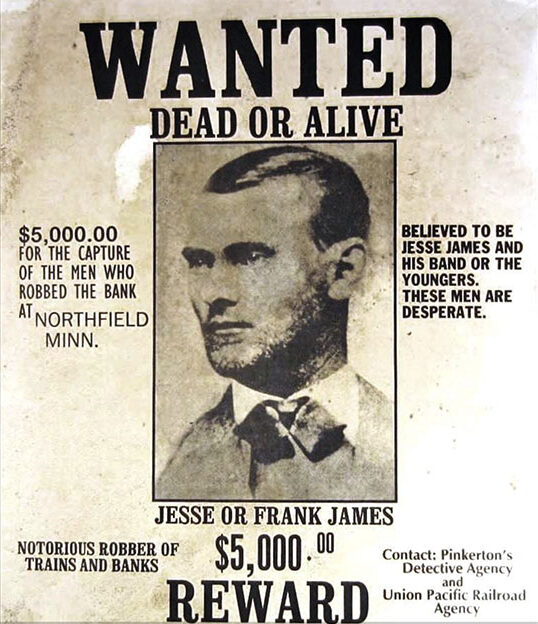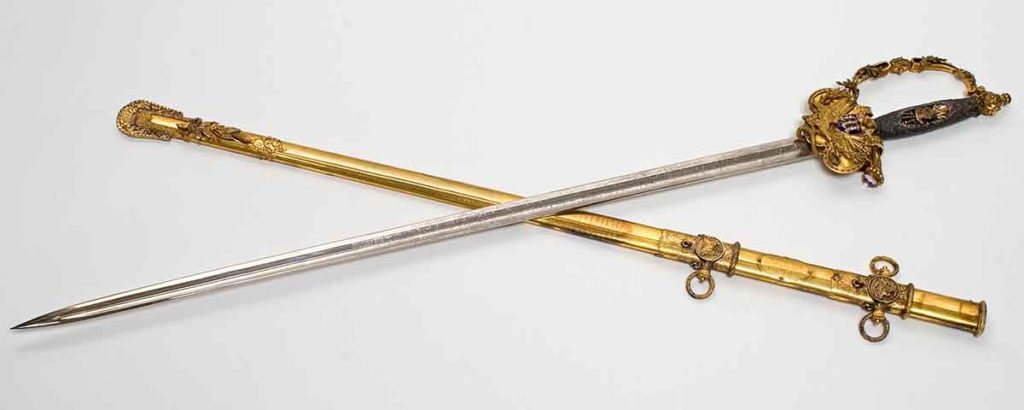In early September 1948, almost 75 years after the infamous Jesse James train raid at Gads Hill, Missouri, a man cutting timber near the robbery site stumbled onto a small cavelike opening in the side of a hill. He thought little of it at the time and after finishing his work returned home. A couple of weeks later, he mentioned the incident to a neighbor, who recalled a local legend.
For decades, his friend said, it had been told that during their retreat from Gads Hill in 1874, Jesse and his gang had hidden all or part of the train loot somewhere in the Ozark hills of Wayne County. Perhaps this cave was the place.
Excited about the prospect of instant wealth, the woodcutter headed back to the woods. This time he brought along a flashlight instead of an ax. After crawling a few yards into the cave, he came upon a sizable room. There he discovered what was later reported to have been a large bundle of paper money, a ‘hatful’ of old coins and a muzzleloading rifle.
When he returned home and told the neighbor of his unusual find, rumor mills began to grind. The story spread, and big city news reporters, eager to get the story of Jesse James’ lost treasure, soon flocked to the scene.
GET HISTORY’S GREATEST TALES—RIGHT IN YOUR INBOX
Subscribe to our HistoryNet Now! newsletter for the best of the past, delivered every Monday and Thursday.
A so-called reliable source claimed that the coins and currency taken from the cave amounted to more than $100,000 and that he had personally seen $10,000 in old gold coins in the woodcutter’s possession. A newspaper told of an armored vehicle parked in front of the man’s house, and adding even more interest to the unfolding drama was the reported arrival of two agents from the U.S. Treasury Department who had come to investigate the matter. All this created quite a stir, and the sleepy little village of Gads Hill, which had enjoyed so many years of peace and tranquility since the train robbery, found itself once again in the national spotlight.
The hubbub went on for several days; then, as quickly as the story had broken, it began to unravel. The woodcutter, it turned out, had not discovered Jesse James’ lost treasure after all, but only a crumbling book, a rusty old rifle with a rotten, worm-eaten stock and some 2-cent pieces (the oldest dated 1886, four years after Jesse’s death). He was surprised himself to learn he had found $100,000.
Recommended for you
‘Only thing I ever told about,’ he said, ‘was finding the gun and a few coins.’
The poor fellow was apparently not to blame for the wild exaggeration. It was, as one newspaper put it, ‘merely the workings of normal backyard gossip.’
And so the story, like so many other debunked myths surrounding Jesse James, was laid to rest. On October 8, 1948, the St. Louis Globe-Democrat printed a final article that poked fun at the whole affair. Its headline appropriately read: ‘Jesse Fizzles Again.’
historynet magazines
Our 9 best-selling history titles feature in-depth storytelling and iconic imagery to engage and inform on the people, the wars, and the events that shaped America and the world.









